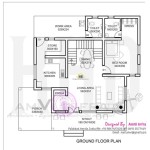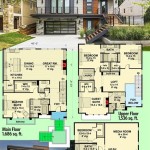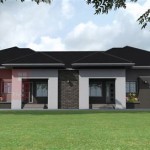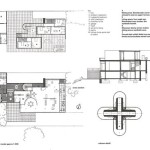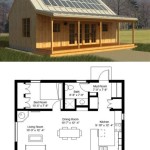Victorian House Plans With Wrap Around Porches
Victorian architecture, characterized by its ornate detailing, asymmetrical designs, and vibrant colors, represents a distinctive era in housing history. Originating in England during the reign of Queen Victoria (1837-1901), this style quickly spread to North America and beyond, evolving into regional variations. A defining feature of many Victorian homes, particularly in warmer climates, is the wrap-around porch. These porches offered a transition space between the interior and exterior, providing shaded relaxation and a social gathering area. This article explores the key aspects of Victorian house plans incorporating wrap-around porches, focusing on their architectural elements, historical context, and design considerations.
The Victorian era encompassed several sub-styles, each contributing unique characteristics to the overall architectural landscape. Queen Anne, Italianate, Gothic Revival, and Second Empire are among the most prominent. While each style exhibits distinct features, the common thread uniting them is the emphasis on elaborate ornamentation and the creation of visually striking facades. Wrap-around porches became increasingly popular as a way to enhance the aesthetic appeal and functionality of these homes.
The inclusion of a wrap-around porch on a Victorian house served multiple purposes. Functionally, it provided shelter from the elements, allowing residents to enjoy the outdoors regardless of weather conditions. Socially, the porch became a public-facing space where neighbors could greet each other, families could relax, and community bonds could be strengthened. Architecturally, the porch added depth and dimension to the house, contributing to its overall grandeur and visual interest.
Key Features of Victorian House Plans with Wrap-Around Porches
Victorian house plans with wrap-around porches exhibit specific architectural elements that contribute to their distinctive character. These features often include intricate detailing, elaborate rooflines, and the strategic use of materials to create a visually appealing and functional space.
One defining feature is the detailing found in the porch construction itself. Spindlework, also known as gingerbread trim, is a common element. This consists of intricately carved wooden pieces that adorn porch posts, railings, and eaves. The spindlework often features repeating patterns and delicate designs, adding a layer of visual complexity to the porch. Another common element is decorative brackets supporting the roof overhang. These brackets can be simple or highly ornate, often reflecting the overall design theme of the house.
Porch columns are another key feature. These columns support the porch roof and contribute significantly to the overall aesthetic. While simple wooden posts were sometimes used, more elaborate designs incorporating classical orders like Doric, Ionic, or Corinthian were also prevalent. These columns added a sense of grandeur and formality to the porch.
The porch flooring is also an important consideration. Historically, wood was the most common material used for porch flooring, often tongue-and-groove planks that created a smooth and durable surface. However, other materials like brick, tile, or even patterned concrete were also used, particularly in later Victorian periods. The choice of flooring material often depended on the overall design aesthetic and the homeowner's preferences.
The roofline of the porch itself is often an extension of the main house's roof, but it can also be a separate structure. In many cases, the porch roof is covered with the same material as the main house roof, creating a cohesive appearance. However, some Victorian homes feature porches with decorative metal roofs or even canvas awnings for added shade and visual interest.
Historical Context and Regional Variations
The popularity of Victorian house plans with wrap-around porches was influenced by several factors, including climate, social trends, and technological advancements. In warmer climates, such as the Southern United States, the porch provided a much-needed shaded space for outdoor living. In cooler climates, the porch offered a transition zone between the interior and exterior, allowing residents to enjoy the outdoors even during inclement weather.
Socially, the porch became a symbol of hospitality and community interaction. It was a place where neighbors could gather to socialize, families could relax, and children could play. The porch served as a semi-public space, blurring the lines between the private realm of the home and the public realm of the street.
Technological advancements also played a role in the popularity of wrap-around porches. The development of mass-produced building materials, such as lumber and decorative millwork, made it easier and more affordable to construct porches. The advent of railroads also facilitated the transportation of these materials, allowing them to be readily available even in remote areas.
Regional variations in Victorian architecture with wrap-around porches are evident throughout North America. In the South, for example, the "shotgun house" often featured a long, narrow porch that ran the length of the house. In the Midwest, Victorian farmhouses typically had large, rambling porches that provided ample space for family gatherings. In the Northeast, the "Stick Style" Victorian often incorporated porches with intricate wooden detailing and steep gabled roofs.
The Queen Anne style, known for its elaborate ornamentation and asymmetrical design, often features wrap-around porches with intricate spindlework and multiple levels. The Italianate style, characterized by its tall, narrow windows and bracketed eaves, may have a more restrained porch with classical columns and a simple roofline. The Gothic Revival style, inspired by medieval architecture, often incorporates pointed arches and decorative tracery into its porch design.
Design Considerations for Incorporating Wrap-Around Porches
When incorporating a wrap-around porch into a Victorian house plan, several design considerations must be taken into account to ensure that the porch is both aesthetically pleasing and functional. Considerations extend to the size and layout of the porch, the selection of materials, and the integration of the porch with the surrounding landscape.
The size and layout of the porch should be proportional to the overall size and design of the house. A porch that is too small will appear insignificant, while a porch that is too large will overwhelm the house. The layout should also be carefully considered to ensure that the porch is accessible from multiple points within the house and that it provides ample space for seating, dining, and other activities.
The selection of materials should be consistent with the overall Victorian aesthetic. Wood is a traditional choice for porch flooring, columns, and railings, but other materials such as brick, stone, and metal can also be incorporated. The choice of materials should be based on durability, maintenance requirements, and aesthetic considerations. Selecting materials that are historically accurate can enhance the authenticity of the design.
The integration of the porch with the surrounding landscape is also an important consideration. The porch should be designed to seamlessly blend with the surrounding gardens and landscaping. This can be achieved by incorporating plants, flowers, and other decorative elements into the porch design. The placement of the porch should also take into account the orientation of the house and the prevailing winds, providing shade and protection from the elements.
Consideration should be given to the privacy of the porch. While the porch is intended to be a semi-public space, it is also important to provide some level of privacy for the residents. This can be achieved by incorporating landscaping elements such as hedges, shrubs, and trees to create a natural barrier between the porch and the street. The placement of furniture and other accessories can also be used to define the space and create a sense of privacy.
Finally, the lighting of the porch should be carefully considered. Adequate lighting is essential for safety and security, as well as for creating a welcoming and inviting atmosphere. Traditional Victorian porch lighting often includes gas lamps or electrified versions thereof. Modern alternatives that mimic the aesthetic of gas lamps while providing energy-efficient lighting are also available.
Victorian house plans with wrap-around porches represent a significant aspect of architectural history. Their distinctive features, historical context, and design considerations offer valuable insights into the evolution of housing styles and the interplay between architecture and society. By understanding these elements, one can appreciate the enduring appeal of Victorian houses and the enduring legacy of the wrap-around porch.

Victorian With Wraparound Porch 69044am Architectural Designs House Plans

Plan 032h 0027 Victorian House Plans Homes Porch

Plan 6908am Victorian Farmhouse With Fabulous Wrap Around Porch House Plans Homes

Victorian House Plans 2 Story Home With Wrap Around Porch

Perfection Victorian House Plans Porch Farmhouse

Victorian With Wrap Around Porch 57217ha Architectural Designs House Plans

Plan 034h 0208 The House
Victorian House Plan 2252 Sq Ft Home 126 1279

Top Three Victorian House Plans The Designers

Plan 69044am Victorian With Wraparound Porch House Plans Basement Farmhouse


